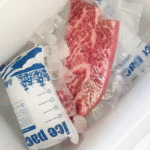How to Effectively Use Cooler Dry Ice Packs for Safe Shipping?
Ensuring temperature-sensitive goods stay in optimal condition during transit is critical for businesses that handle perishable items. Cooler dry ice packs are an essential part of the solution, keeping goods frozen or chilled during shipping. In this comprehensive guide, we’ll explore the best practices for using dry ice packs in coolers and answer your key questions to make sure your shipments are safe, cost-effective, and efficient.
-
What are cooler dry ice packs, and why are they important for shipping?
-
How do you choose the right dry ice pack for your shipments?
-
What are the safety precautions when using dry ice?
-
How to handle and store dry ice safely?
What are Cooler Dry Ice Packs, and Why Are They Important?
Cooler dry ice packs are critical for transporting products that need to stay frozen, such as pharmaceuticals, food, and biological samples. Dry ice sublimates at -78.5°C, providing a highly effective cooling solution without leaving any liquid residue, which is perfect for long-distance shipping.
The key benefit of using dry ice is its ability to maintain an ultra-cold environment, which ensures that temperature-sensitive goods remain in their optimal state. For example, dry ice helps prevent spoilage in frozen food products or preserves the effectiveness of vaccines during transit.
Characteristics of Dry Ice Packs
| Characteristics | Description | What It Means for You |
|---|---|---|
| Temperature Range | -78.5°C | Keeps items frozen or chilled during transit |
| Sublimation Rate | 5-10 lbs per 24 hours | Impacts the frequency of pack replacement |
| Shipping Regulations | Subject to DOT and IATA rules | Avoids delays and ensures safe transport |
How Do You Choose the Right Cooler Dry Ice Pack for Shipping?
Selecting the right cooler dry ice pack depends on several factors, including the type of product being shipped and the duration of the shipment. For short trips, smaller packs may suffice, but for longer shipments, you will need larger packs or multiple smaller ones.
Key Factors for Choosing Dry Ice Packs:
-
Shipment Type: For frozen goods (e.g., ice cream or meat), dry ice is your best option. For chilled items (e.g., fresh vegetables or pharmaceuticals), ice packs or gel packs are more suitable.
-
Shipping Duration: Longer trips require more dry ice or better insulation to maintain consistent temperatures.
Practical Tips:
-
For food products, use dry ice with insulated containers to ensure the cold lasts through longer transit.
-
For pharmaceutical shipments, opt for larger dry ice packs or multiple smaller ones to guarantee temperature consistency.
-
For biological samples, ensure that dry ice packs meet required temperature thresholds to preserve the integrity of the samples.
Safety Precautions When Using Dry Ice
Handling dry ice requires special precautions to avoid injuries such as frostbite or asphyxiation due to CO₂ buildup.
Safety Guidelines:
-
Ventilation: Always use dry ice in well-ventilated areas. As it sublimates, it releases CO₂ gas, which can be dangerous in enclosed spaces.
-
Protective Gear: Wear insulated gloves and goggles when handling dry ice.
-
Disposal: Let unused dry ice sublimate in a well-ventilated area, away from people and pets.
| Storage Guidelines | Description | Your Action |
|---|---|---|
| Ventilated Area | Avoid enclosed spaces | Ensure proper airflow in storage |
| Protective Equipment | Use gloves and goggles | Protect yourself from frostbite |
| Disposal Methods | Let dry ice sublimate in open air | Safely dispose in outdoor spaces |
2025 Trends and Developments in Dry Ice Shipping
The cold chain logistics industry is evolving rapidly, with new technologies emerging to improve efficiency, safety, and sustainability in temperature-sensitive shipping.
Key Trends:
-
Smart Temperature Sensors: These devices monitor and alert you to temperature fluctuations during shipping.
-
Blockchain Technology: Used for traceability and enhancing supply chain security.
-
Sustainable Materials: Innovations like biodegradable gel packs and phase-change materials (PCMs) are gaining traction.
Market Insights:
As the demand for fresh, perishable products continues to rise, the cold chain market is expected to surpass $500 billion by 2025. This growth is largely driven by sectors like food delivery, pharmaceuticals, and e-commerce, making efficient dry ice solutions even more essential for businesses.
Frequently Asked Questions
Q1: How long does dry ice last in transit?
Dry ice typically lasts between 24-48 hours, depending on the size of the pack, insulation quality, and external temperature.
Q2: Can I use dry ice for international shipments?
Yes, but dry ice is classified as a hazardous material. Be sure to follow all international shipping regulations and consult with your carrier for any specific rules.
Q3: How should I pack dry ice?
Always use well-insulated containers and ensure that there is proper ventilation to allow sublimation. Label your packages accordingly to indicate that they contain dry ice.
Conclusion and Recommendations
To successfully ship temperature-sensitive goods, selecting the appropriate cooler dry ice pack is essential. By considering your shipment’s needs, choosing the right size, and following safety protocols, you can ensure that your products arrive in perfect condition.
Next Steps:
-
Evaluate your shipping requirements and choose the appropriate dry ice packs for your products.
-
Train your staff on safe handling procedures to reduce risks associated with dry ice.
-
Stay informed about emerging trends in cold chain logistics to optimize your shipping process.
About Tempk
At Tempk, we specialize in providing high-quality dry ice solutions tailored to meet the unique needs of your business. With extensive experience in cold chain logistics, we ensure that your shipments remain safe and efficient throughout transit.
Call to Action:
Contact us today for expert advice on dry ice shipping solutions or to place an order for your next shipment.
























